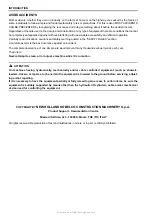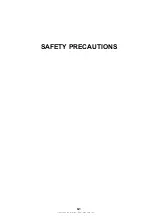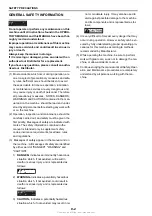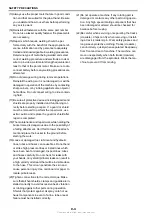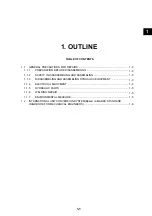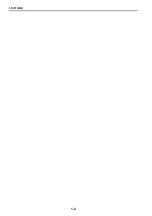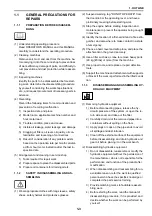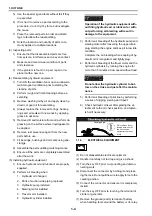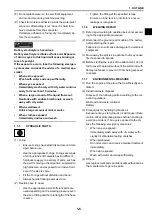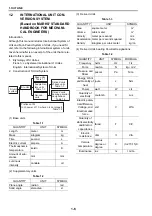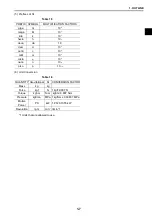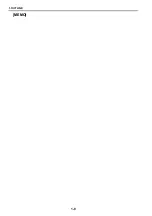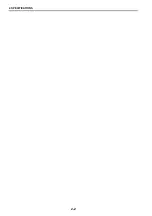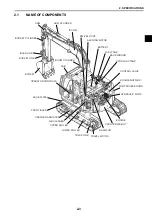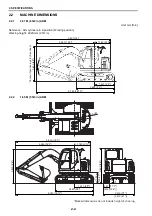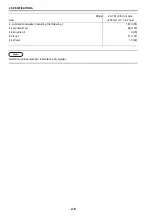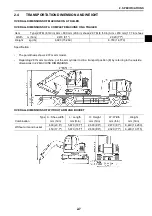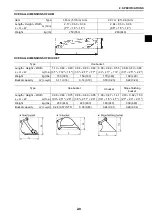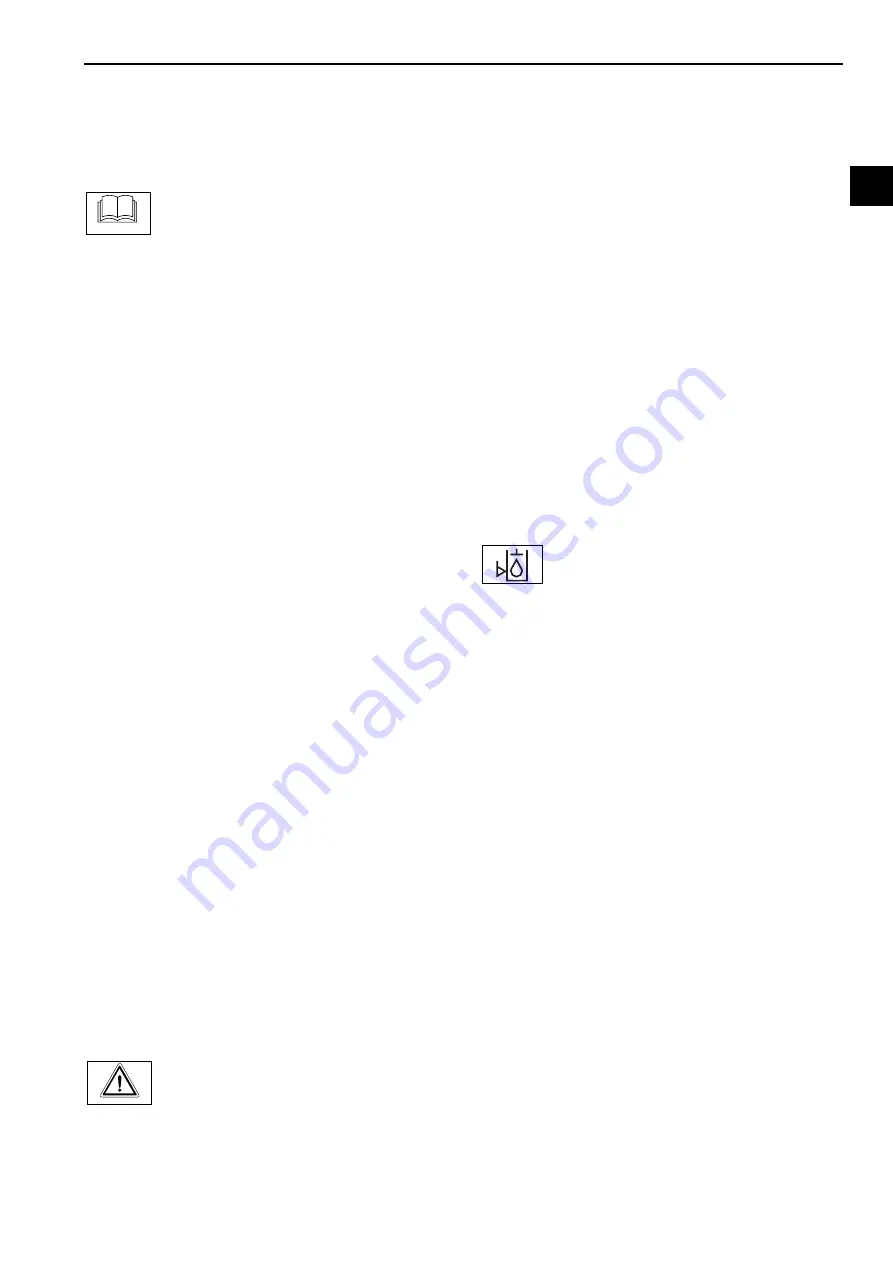
1. OUTLINE
1-3
1.1
GENERAL PRECAUTIONS FOR
REPAIRS
1.1.1
PREPARATION BEFORE DISASSEM-
BLING
(1) Understanding operating procedure
Read OPERATOR’S MANUAL and this MANUAL
carefully to understand the operating procedure.
(2) Cleaning machines
Remove soil, mud, and dust from the machine be-
fore carrying it into the service shop to prevent loss
of work efficiency, damage of parts, and difficulty in
rust prevention and dust protection while reassem-
bling.
(3) Inspecting machines
Identify the parts to be disassembled before start-
ing work, determine the disassembling procedure
by yourself considering the workshop situations
etc., and request procurement of necessary parts in
advance.
(4) Recording
Record the following items for communication and
prevention of recurring malfunction.
1) Inspection date and place
2) Model name, applicable machine number, and
hour meter read
3) Trouble condition, place and cause.
4) Visible oil leakage, water leakage and damage
5) Clogging of filters, oil level, oil quality, oil con-
tamination and loosening of connections
6) Result of consideration if any problem exists
based on the operation rate per month calculat-
ed from hour meter indication after the last in-
spection date.
(5) Arrangement and cleaning in service shop
1) Tools required for repair work.
2) Prepare space to place the disassembled parts.
3) Prepare oil containers for draining oil etc.
1.1.2
SAFETY IN DISASSEMBLING AND AS-
SEMBLING
(1) Wear appropriate clothes with long sleeves, safety
shoes, safety helmet and protective glasses.
(2) Suspend warning tag "DO NOT OPERATE" from
the doorknob or the operating lever, and have a
preliminary meeting before starting work.
(3) Stop the engine before starting inspection and
maintenance to prevent the operator being caught
in machine.
(4) Identify the location of a first-aid kit and a fire extin-
guisher, and also where to make contact in a state
of emergency.
(5) Choose a hard, level and safe place, and place the
attachment on the ground securely.
(6) Use a lifter such as a crane to remove heavy parts
(20 kg [45 lbs] or more) from the machine.
(7) Use proper tools, and replace or repair defective
tools.
(8) Support the machine and attachment with supports
or blocks if the work is performed in the lifted condi-
tion.
1.1.3
DISASSEMBLING AND ASSEMBLING HY-
DRAULIC EQUIPMENT
(1) Removing hydraulic equipment
1) Before disconnecting pipes, release the hy-
draulic pressure of the system, or open the re-
turn side cover and take out the filter.
2) Carefully drain oil of the removed pipes into a
containers without spilling on the floor.
3) Apply plugs or caps on the pipe ends to avoid
oil spillage and dust intrusion.
4) Clean off the external surface of the equipment
before disassembling, and drain hydraulic and
gear oil before placing it on the workbench.
(2) Disassembling hydraulic equipment
1) Do not disassemble, reassemble or modify the
hydraulic equipment without the permission of
the manufacturer, who is not responsible for the
performance and function of the product after
modification.
2) When disassembling and reassembling for un-
avoidable reason, refer the work to qualified
personnel who have the specific knowledge or
completed the parts service training.
3) Provide matching marks to facilitate reassem-
bling work.
4) Before starting the work, read the manual of
disassembling procedure, if it is provided, and
decide whether the work can be performed by
yourself.
Read Operator’s Manual
before disassembling
WARNING
Summary of Contents for E70SR
Page 2: ...Find manuals at https best manuals com ...
Page 5: ...0 1 SAFETY PRECAUTIONS Find manuals at https best manuals com ...
Page 12: ...1 OUTLINE 1 2 ...
Page 18: ...1 OUTLINE 1 8 MEMO ...
Page 20: ...2 SPECIFICATIONS 2 2 ...
Page 34: ...2 SPECIFICATIONS 2 16 MEMO ...
Page 36: ...3 ATTACHMENT DIMENSIONS 3 2 ...
Page 51: ...This as a preview PDF file from best manuals com Download full PDF manual at best manuals com ...




